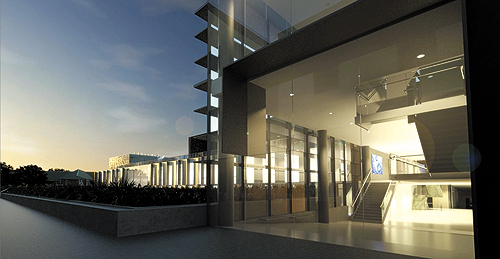Ground broken for nano-centre
Building has begun on the site that will be the new home of Australian nanoscience, with the Minister for Innovation, Industry, Science and Research launching the project this week.
Construction is underway on the new Australian Institute for Nanoscience at the University of Sydney. The site will eventually include a range of cutting-edge technologies for viewing, analysing and manipulating materials on the very smallest scales.
"The Australian Institute for Nanoscience will be a world-leading research and teaching facility designed to meet the demanding requirements of nanoscience research in the decades to come," said Professor Tim Bedding, Head of the University’s School of Physics.
“The Institute will house a state-of-the-art national nanofabrication facility and will be at the forefront of nanoscience facilities in the world, with many elements of the building being specifically designed to enable high-precision nanoscience research,” he said.
The University of Sydney believes the building will create a number of jobs during construction and many more with the outcomes of research in an economy looking to capitalise on the resource of knowledge.
Senator Kim Carr, federal Minister for Innovation, Industry, Science and Research and Minister for Higher Education was on site to launch the building project. He said: “Nanoscience is an element in building our future prosperity. Nanophotonics is already a strength for Australia, and AIN will increase our capability and build on our successes in quantum computing, memory devices and photovoltaic cells.”
"Nanotechnology is a transformative force for manufacturing and is predicted to be worth $US3 trillion globally by 2020. Australia needs to stake a claim to our slice of that pie now, by building well-researched prototypes for the market. AIN will help make that happen and keep Australian research internationally competitive."
The building work beginning this week is the result of several years of planning, after the University was awarded $40 million towards the construction of the $110 million from the federal government's Education Investment Fund in 2010.
More information on the new nanoscience project is available from the University’s website. 








 Print
Print